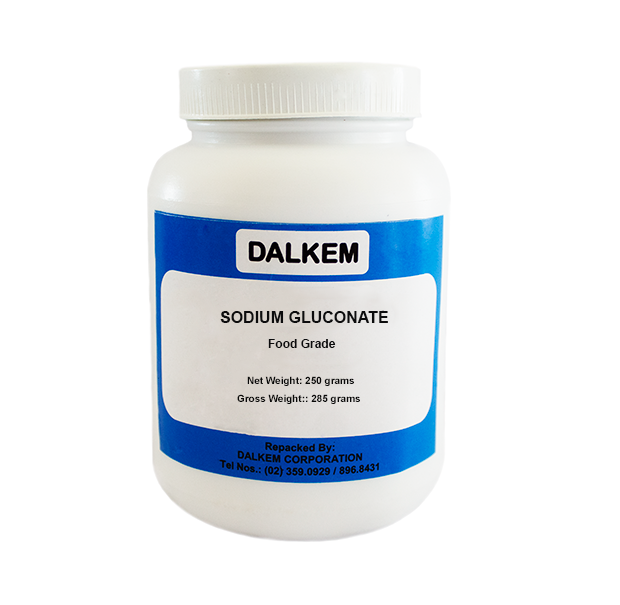Dalkem Sodium Gluconate Food Grade
Sodium gluconate or sodium d-gluconate, the sodium salt of gluconic acid with the European food additive number E576, is different with other gluconates that can be used as a nutrient, this ingredient is mainly used as a chelating agent and cleaner in food and industrial uses.
What’re the Uses of Sodium gluconate?
It is a multi-functional ingredient that can be used in a lot of fields, commonly used for its outstanding chelating property in food and industrial uses. Also used for its PH buffering and taste improvement in food.
Food
Food grade sodium gluconate can be used as:
• A sequestrant agent by chelating undesirable metal ions.
• A PH buffer in drink.
• A taste improver for beverage by masking off-notes or reducing the bitterness/aftertaste from artificial sweeteners, soybean protein, minerals or caffeine.
• A stabilizer in meat products by increasing meat water-binding capacity and improving its firmness and sliceability. Meanwhile, sodium gluconate is a replacement of phosphates.
Pharma and Nutraceutical
It can be used as an excipient as a buffer and pH adjuster in the following products:
• Syrups
• Suspension
• Swallowable/orally dispersible tablets
• Hard capsules
Others
• Cosmetics
Sodium gluconate functions as a chelating and skin conditioning in cosmetic and personal care products. And usually, we can find it in skin care products like face cream, soap, and toothpaste.
Industrial uses
• Chelating agent
With good sequestering power (over EDTA, NTA and some other related compounds) to combine with di- and trivalent metal ions, such as calcium, iron, copper, aluminum to form stable chelates and take them out of water or the solution at an alkaline pH, and with little effect on temperature.
Due to this property, it is widely used in:
• Water treatment
• Bottle washing
• Corrosion inhibition
• Metal surface treatment
• Industrial cleaning
• Concrete retarder
In addition, it can be used in the construction industry, as a retarding cement enhancing additive.
Specification
Other names Sodium d-gluconate, Sodium salt of D-gluconic acid
CAS number 527-07-1
Chemical formula NaC6H11O7
Molecular weight 218.137
Properties
• Appearance
A white to tan powder or granular.
• Solubility
Very soluble in water, sparingly soluble in ethanol.
• PH
Between 6.5 and 7.5 (10 % solution)
Is Sodium gluconate Safe to Eat?
Yes, it has been approved safe by the U.S. Food and Drug Administration (FDA) and European Food Safety Authority (EFSA), as well as the Joint FAO/WHO Expert Committee on Food Additives (JECFA).
FDA Sodium gluconate is generally recognized as safe (GRAS) when used as a sequestrant in food.
Frequently asked questions
How is it made?
Sodium gluconate can be synthesized from the reaction of gluconic acid ( produced by oxidation of D-glucose, derived from starch) and sodium hydroxide.
Is it gluten free?
Yes, it is gluten free as it does not contain wheat, rye, barley, or crossbreeds of these grains, therefore can be used for people with celiac disease.
Gluconic acid vs sodium gluconate?
Gluconic acid is the liquid, not convenient to use in some applications, and where it is combined used with sodium hydroxide, better to use sodium gluconate directly.

